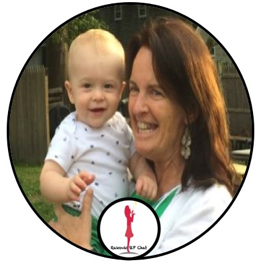One of the shifts in working with students with significant disabilities has been the selection of vocabulary that we teach and how we introduce that. Previously we would teach concrete nouns that were in the child’s environment or were part of a lesson.
It would not be unusual to teach a student a number of food choices or animal names. If you think about these words they are not used throughout the day. One of the things that occur with the food words is that a child’s food choices might change. Think about how many times a child may eat at school. Would there be different choices at each of the mealtimes? How many times would each word, therefore, be used during the school day?
If instead of teaching these food words we taught the words more, different, finished think of how many times we could use these including during mealtime.
- Are you finished?
- Oh, you want more.
- Do you want something different?
- Today we are doing something different.
- Let’s finish this book.
Core words can be used for many purposes and throughout the day. It allows many opportunities to teach. As I explored core words one of the things I found useful is to brainstorm a number of sentences that I could use with the core words to assist me in ensuring that I was teaching the word in multiple contexts throughout the day. This might be a great activity to do with your team so they can have a better understanding of how to incorporate the words in everyday activities.
The Core Vocabulary words can be presented in a communication app, a printed board or with 3D symbols.
One of the other shifts in thinking is that we need to start with real items or photographs, then go to picture symbols and then perhaps words. Research, however, says that children learn the symbols we teach.
When we teach the Core Vocabulary we need to use the same best practice strategies that we use to teach any skill.
- We need to make it engaging and meaningful and we need to repeat often. The more authentic we make it the more likely it will be repeated naturally both by the teacher and the student.
- We need to presume competence. There is no pre-requisite to learning the Core Vocabulary. When we expect all children to learn the vocabulary we are more apt to find different ways to introduce and reinforce the vocabulary.
- TEACHING is the key focus. We are not doing drill work or testing we are assisting a child to learn a communication process.
Once the Core Vocabulary is learned it can be used in so many different situations that it allows more effective communication and the building of communication competence. As the words are taught in many different situations and representing many things there is less of a problem with the generalization of the vocabulary words.
How do we teach the Core Vocabulary?
We use:
- Aided Language Input: we use the symbols in our talking with the students. I have found this key to becoming more familiar with the layout of the symbols and in slowing down my communication so that the student is able to process the message. I am communicating and modeling what I want the student to do.
- Frequency: we provide multiple opportunities for the students to use the vocabulary. They will be seeing and hearing the words in multiple situations including some that encourage active participation.
- Wait Time: we will give a child time to process the message and respond. Just as we would wait for a child that is using verbal language to respond we need to think of giving that time to the child using a symbolic system. I train myself to count after I initiate a communication exchange before moving on to another message.
- Expansion: we expand on the child’s utterance to model the next step in communication


